What is Neurolov?
Introduction
Neurolov is a decentralized AI compute network that allows anyone to access or contribute GPU power directly through their web browser. Built on the Solana blockchain, the platform is designed to lower the cost of AI workloads while making GPU resources more accessible and transparent.
The AI industry today is heavily centralized. Access to compute resources – especially GPUs – is controlled by a few large companies. This limits innovation and increases costs for developers, researchers, and small businesses. Neurolov addresses this by distributing compute tasks across a global network of user devices, including laptops and smartphones.
The network runs entirely on WebGPU – a breakthrough technology that allows web browsers to tap directly into a device’s graphics processing power (GPU). For users, this means there’s no need to download software, install drivers, or buy expensive hardware. Any modern browser becomes a powerful compute node with just one click. This simplicity and accessibility are what make WebGPU truly game-changing.
Participants can contribute idle device power and earn $NLOV tokens in return. On the other hand, users can run AI models – including image generation, audio processing, and LLMs – by paying with tokens.
Neurolov also includes token incentives for compute providers, stakers, and ecosystem participants. This opens up a new model for AI infrastructure that is fully distributed, on-chain, and community-owned.
What is Neurolov?
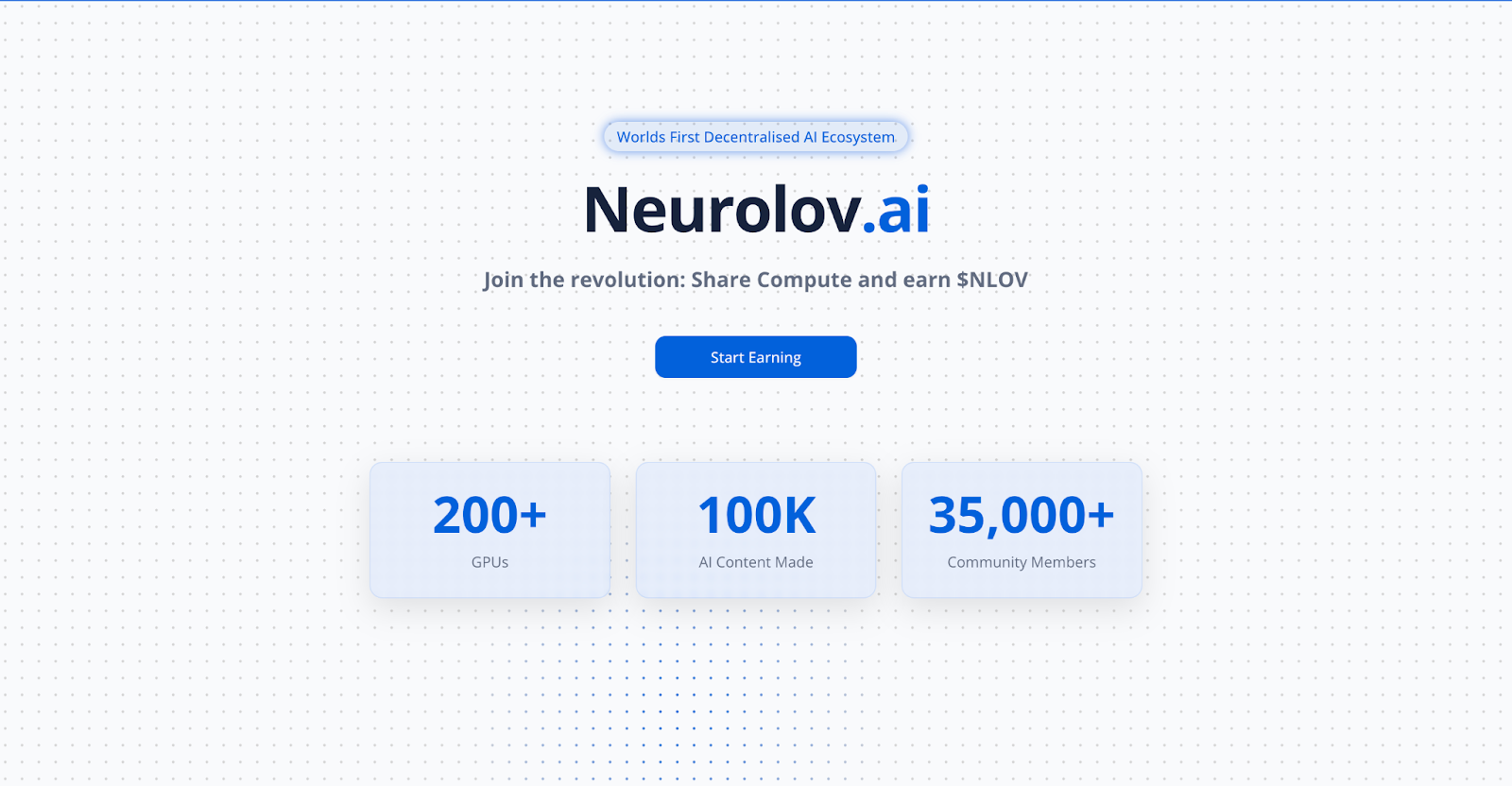
Neurolov is a decentralized AI infrastructure platform that provides GPU compute resources through a peer-to-peer browser-based network. It allows users to run AI models or contribute computing power without needing traditional cloud services. The platform is built on Solana, a high-speed blockchain known for low-cost transactions and fast execution.
Neurolov is a Decentralized Physical Infrastructure Network (DePIN) for AI. It turns underused device resources, such as GPUs in personal computers and smartphones, into a shared compute layer. This infrastructure is used to run AI tasks like image generation, text processing, voice generation, and more.
Neurolov operates in two main roles:
- Users: Anyone can access AI services (e.g., generate images, run chat models) by paying in $NLOV tokens.
- Providers: Anyone with a device that supports WebGPU can share their compute power with the network and earn $NLOV tokens as a reward.
The platform also supports AI Agents, which are automated tools for multi-step tasks. All compute transactions and task verifications are handled on-chain via Solana smart contracts.
History of Neurolov, Origins, and Key Persons
Neurolov was founded in late 2023 with the goal of solving two core problems in the artificial intelligence space: limited access to GPU compute and the high cost of AI infrastructure. The team behind the project recognized that while AI demand was growing, most resources were controlled by centralized cloud providers, making it difficult for independent developers and small teams to scale their work affordably.
The project was officially launched in Q1 2024, with development focused on building a WebGPU-powered compute layer that could run in any browser. The decision to build on Solana was made early, due to its high throughput, low fees, and growing developer ecosystem.
Key Persons
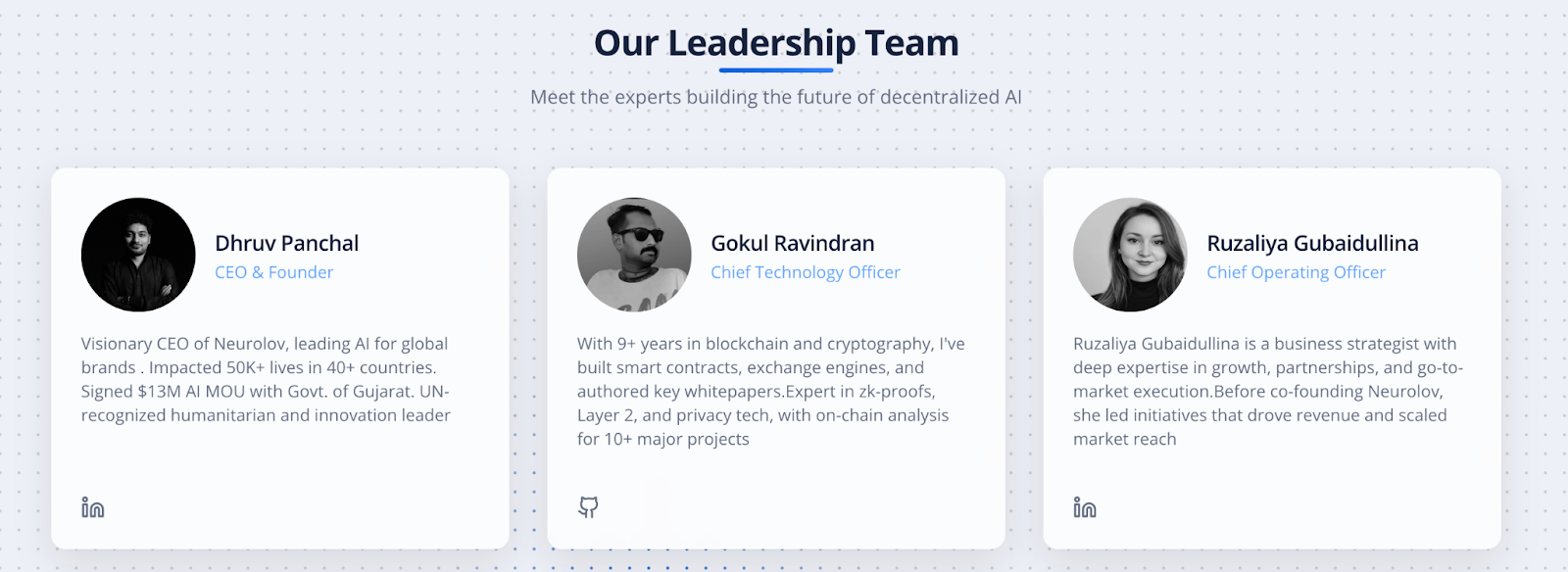
Neurolov is led by a founding team with backgrounds in blockchain, AI infrastructure, and global business execution:
Dhruv Panchal – CEO & Founder A UN-recognized humanitarian and innovation leader, Dhruv has led AI solutions for global brands, impacting over 50,000 lives in 40+ countries. He recently signed a $13M AI MoU with the Government of Gujarat.
Gokul Ravindran – Chief Technology Officer Gokul has over 9 years of experience in blockchain, smart contracts, zk-proofs, and privacy technologies. He has contributed to over 10 major crypto projects and authored multiple technical whitepapers.
Ruzaliya Gubaidullina – Chief Operating Officer A business strategist focused on scaling partnerships and go-to-market execution, Ruzaliya previously led revenue-driving initiatives before co-founding Neurolov.
The team operates across Europe and the Middle East. Neurolov is registered in the British Virgin Islands.
How Does Neurolov Work?
Neurolov operates as a decentralized compute layer for running AI tasks. It connects users who need GPU power with contributors who offer unused GPU resources. The process happens entirely within web browsers using WebGPU, a modern graphics API that enables GPU-accelerated computation without needing to install software or configure hardware.
WebGPU-Powered Browser Compute
WebGPU allows compatible devices—laptops, desktops, and smartphones—to run compute tasks directly in the browser. This removes the need for downloads or configuration. Users completing tasks are rewarded with $NLOV tokens.
Task Distribution and Verification
Tasks are split and distributed across devices in the NeuroSwarm network. Each output is verified on-chain using proof-of-computation before rewards are distributed. Results are then aggregated and delivered to the user.
$NLOV Token Payments
Users pay in $NLOV to run models. Providers earn $NLOV in return. Payments and settlements are handled via Solana smart contracts.
Prebuilt AI Models and Agents
Neurolov hosts models such as LLMs, image generators, and audio processors. AI Agents, which automate multi-step workflows, are built on top of this compute infrastructure.
Security and Reliability
All activity is logged on-chain, with signature verification and penalties for incorrect submissions to ensure reliability without centralized enforcement.
Key Features of Neurolov
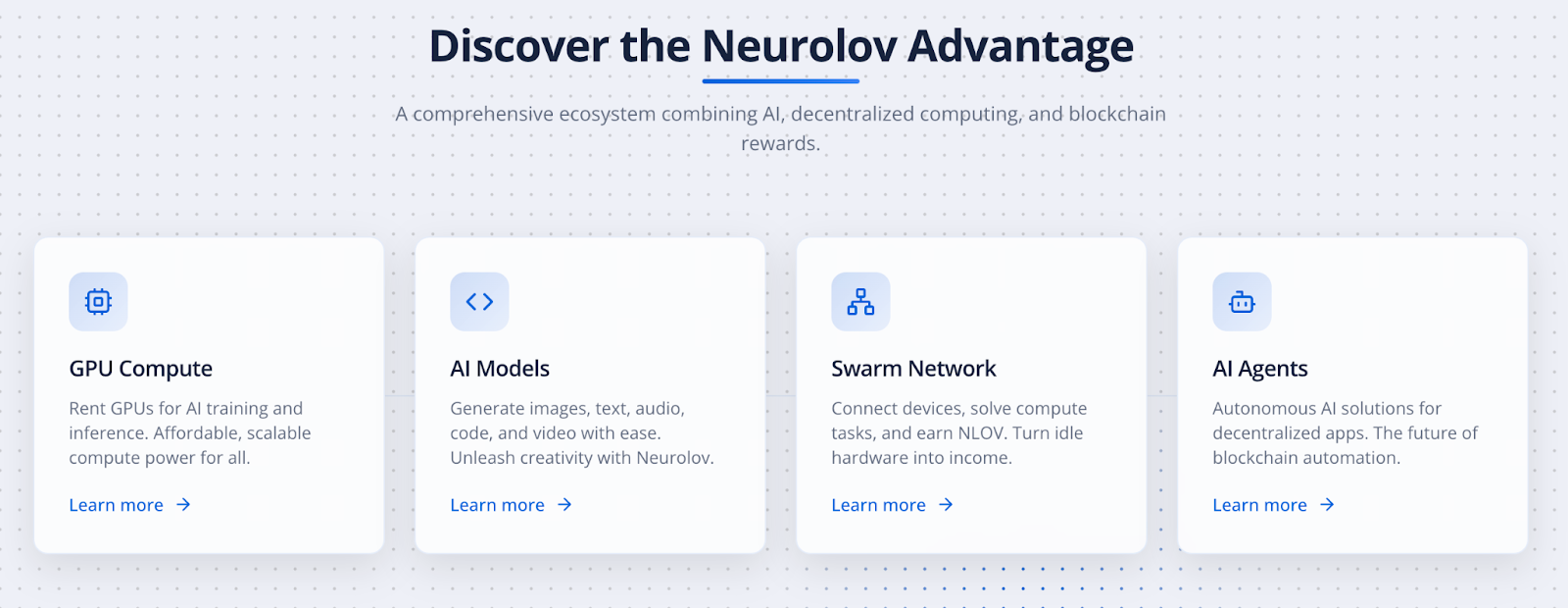
Neurolov offers several core features that set it apart from traditional AI infrastructure platforms. These features focus on accessibility, decentralization, and utility within a token-driven system. Below are the main components of the Neurolov platform:
WebGPU-Based Compute Network (NeuroSwarm)
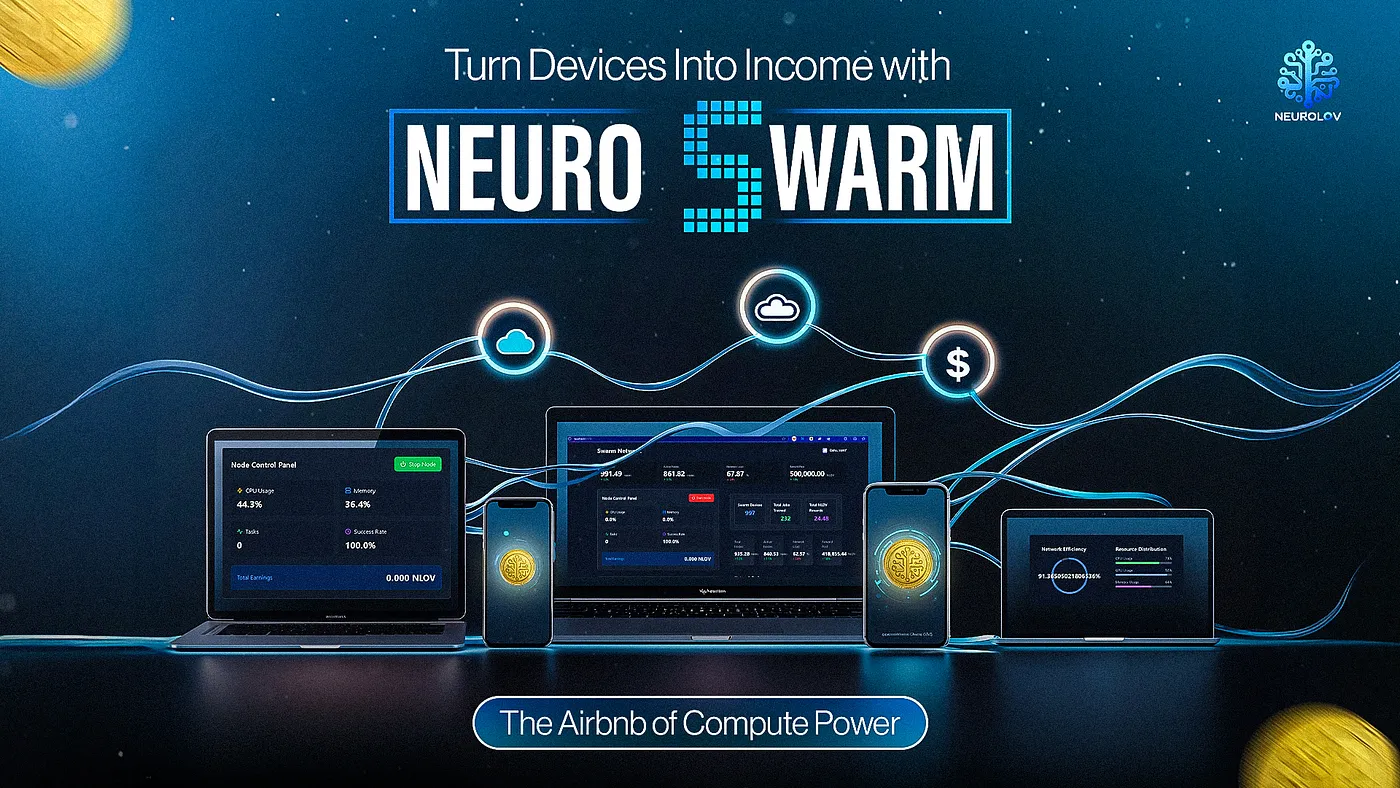
Neurolov’s network, called NeuroSwarm, allows users to contribute GPU power directly through their browsers using WebGPU. No software installation or technical setup is required. Devices that join the network receive AI tasks, execute them locally, and earn $NLOV tokens as compensation.
This system enables global participation and lowers the technical and financial barriers typically associated with running AI workloads.
Prebuilt AI Models
The platform provides a library of pre-integrated models for different AI tasks, including:
- Text generation (LLMs)
- Image generation (text-to-image, image-to-image)
- Audio generation and voice conversion
- Video transformation and processing
Users can run these models instantly by paying with $NLOV tokens. The models are continuously updated and optimized for WebGPU environments.
AI Agents

Neurolov supports AI Agents, which are automated tools that can complete multi-step workflows. Agents combine several models into a single task, such as taking a prompt, generating an image, and summarizing it. Users can rent, create, or customize these agents using a simple interface.
Agents are powered by distributed compute from NeuroSwarm and designed to scale with demand.
Decentralized and On-Chain Task Management
Every compute task is logged and verified on the Solana blockchain. This ensures transparency and prevents manipulation. The task execution process includes:
- Job assignment
- Result validation
- Payment settlement
Smart contracts handle the distribution of payments and task rewards without manual oversight.
Token Incentives ($NLOV)
All activity on the platform is linked to the $NLOV token. Compute providers earn tokens, users spend tokens for services, and stakers can lock tokens to access governance or premium features. This system aligns incentives and ensures that all participants are rewarded fairly.
Browser-Based Access and UI
Neurolov is designed to be fully accessible from standard browsers. The interface is built to support both technical and non-technical users. All features—from running models to checking wallet balances—are accessible through a unified dashboard without external software.
Is $NLOV a Good Investment?
$NLOV is the utility token of the Neurolov platform. Its investment potential depends on platform adoption, token use, and roadmap delivery. Neurolov targets two high-growth areas: decentralized infrastructure and AI compute. Rising GPU demand makes decentralized alternatives attractive.
The project is in its presale phase. Token prices are set by the team and may not reflect future market value. Only part of the total supply is available during presale. Remaining tokens follow vesting schedules, which may affect price over time.
Participation is blocked in several regions, including the U.S. and China, which could affect token liquidity and accessibility.
How Can You Own $NLOV
There are several ways to acquire $NLOV, depending on your purpose, whether you want to invest, use AI services, or earn by providing compute power. As of now, the token is not yet listed on major exchanges, so acquisition is limited to early participation and platform-based rewards.
Tokenomics of $NLOV

The $NLOV token is the core utility and reward token of the Neurolov ecosystem. It is deployed as a Solana SPL token, which enables fast, low-cost transactions and easy integration with Solana wallets and DApps.
Total Fixed Supply: 500,000,000 $NLOV tokens The supply is capped, meaning no additional tokens will be minted beyond this amount.
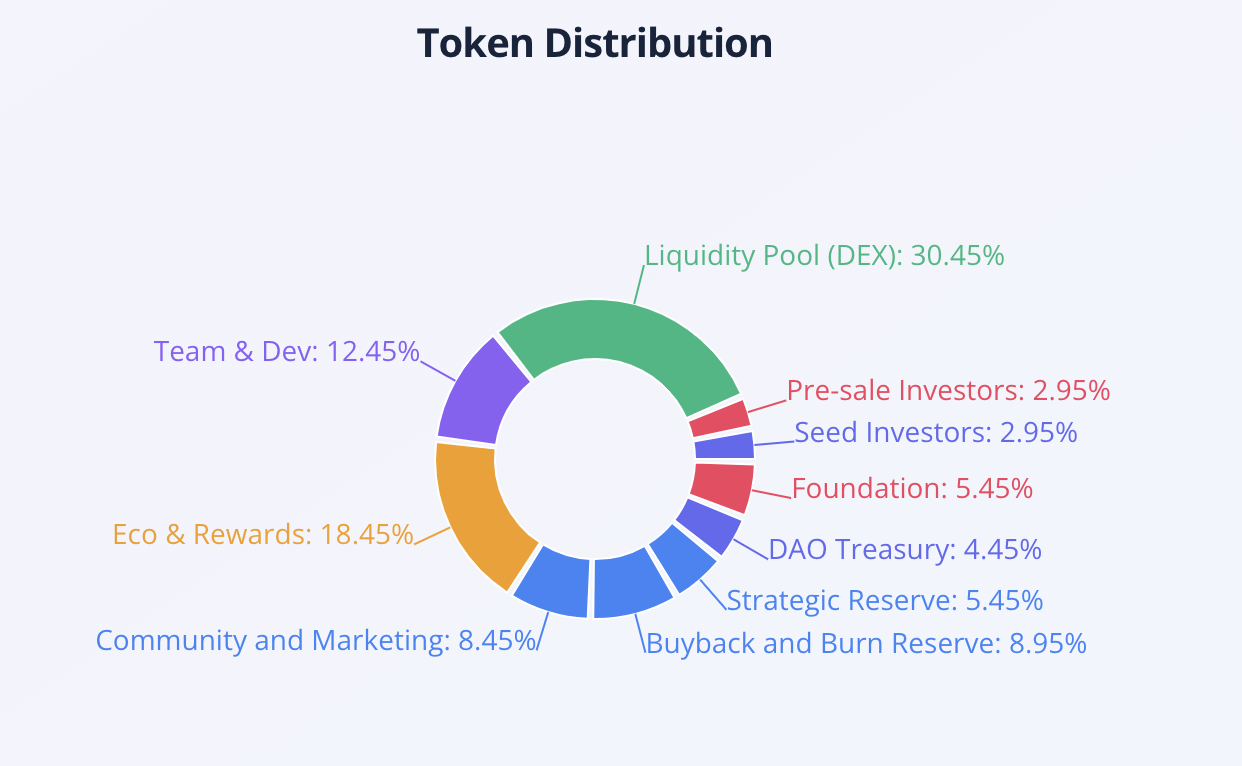
The token distribution is designed to support long-term growth while balancing early access and network incentives.
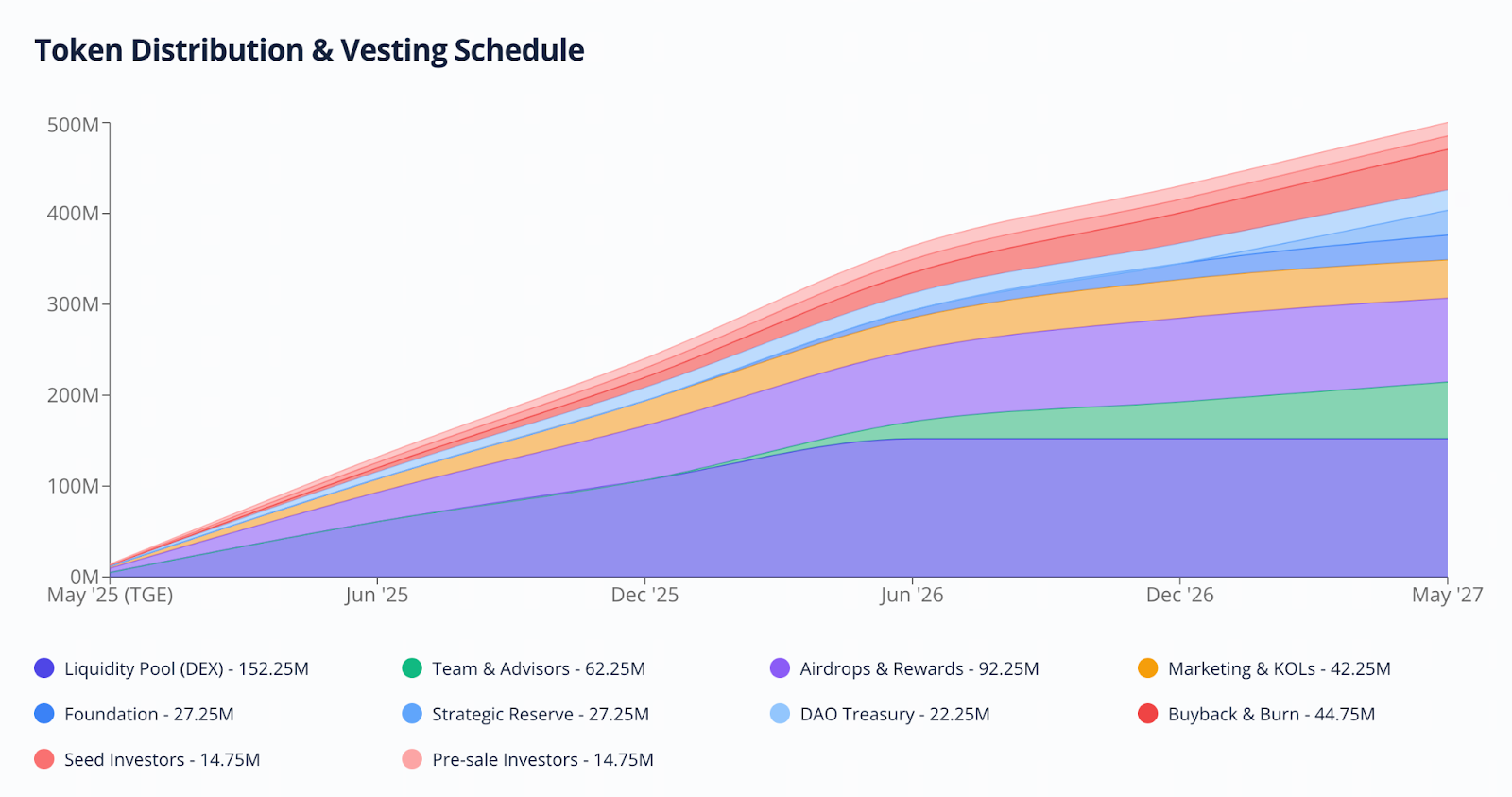
Deflationary Mechanics
- Buyback and Burn: A portion of the platform’s revenue may be used to buy $NLOV from the market and burn it, reducing total supply.
- Agent Revenue Sharing: AI agents deployed on the platform may allocate a percentage of their revenue to burning tokens.
Roadmap of Neurolov
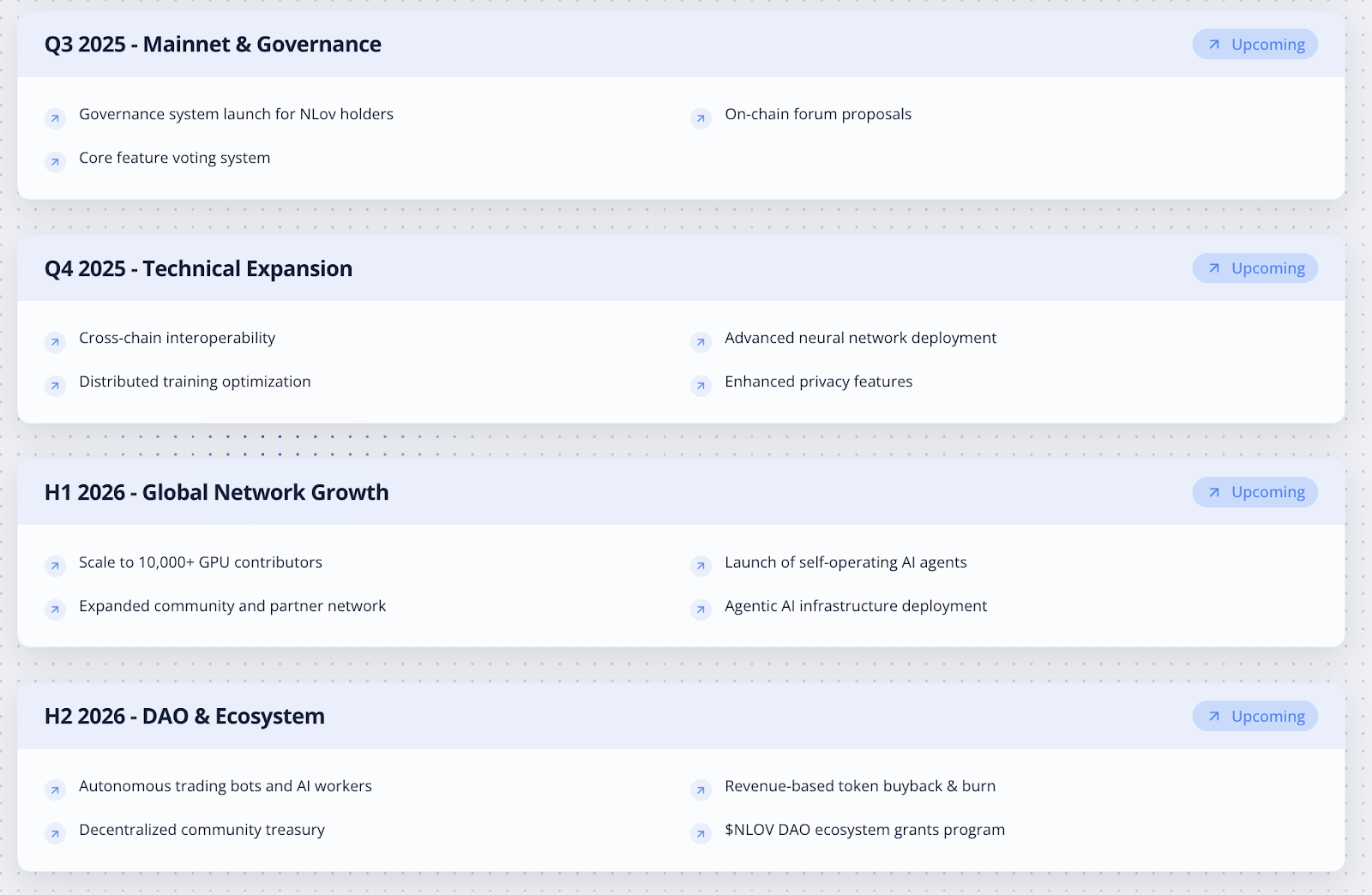
Q3 2025 – Mainnet & Governance Governance features will launch, enabling $NLOV holders to participate in on-chain proposal submission and core feature voting.
Q4 2025 – Technical Expansion The platform will integrate cross-chain functionality, deploy more advanced neural networks, and implement distributed training and enhanced privacy features.
H1 2026 – Global Network Growth Neurolov aims to onboard 10,000+ GPU contributors, launch self-operating AI agents, and expand its developer and partner community through agentic AI infrastructure.
H2 2026 – DAO & Ecosystem The platform will transition into a fully decentralized DAO, introducing autonomous trading bots, a community treasury, token buyback and burn mechanisms, and an official $NLOV ecosystem grants program.
Conclusion
Neurolov is building a decentralized AI compute platform that uses browser-based GPU power to make AI infrastructure more accessible, affordable, and community-driven. By running on Solana and leveraging WebGPU, it avoids the complexity and high costs associated with traditional cloud-based AI services.
The platform connects users who need AI processing with contributors who provide unused compute resources. This peer-powered model supports a wide range of use cases – from image and audio generation to autonomous AI agents – without relying on centralized infrastructure.
At the heart of the ecosystem is the $NLOV token, used for payments, rewards, staking, and eventually governance. The tokenomics are designed to incentivize long-term participation while minimizing early-stage volatility, though as with all presales investment risks remain.
Neurolov is still in its early stages, with major features like agent monetization, DAO governance, and cross-chain compatibility on the roadmap for 2026. Its future will depend on growing user adoption, robust technical performance, and disciplined execution.
For those excited by the idea of decentralized AI or looking to earn from idle device power, Neurolov offers a compelling vision and a structured token model. Neurolov envisions a world where every browser becomes an AI supernode—democratizing compute and redefining what’s possible in Web3 AI.





